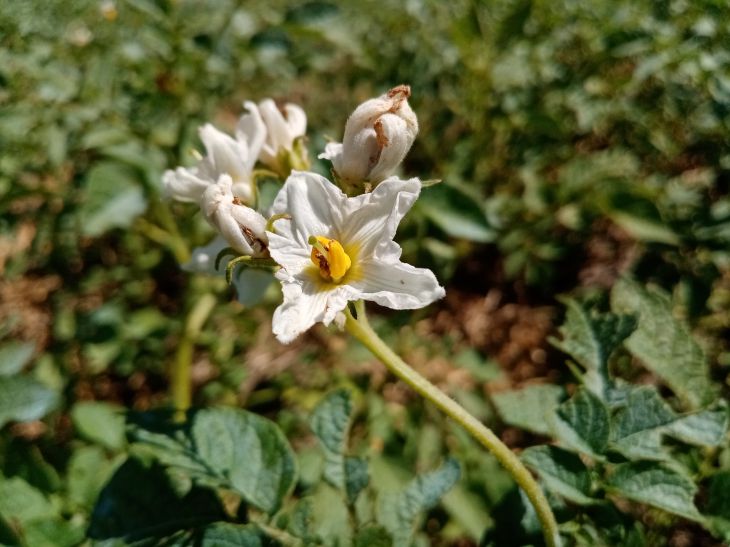July Potato Ritual: What to Do Now to Save the Crop from Late Blight
Summer is in full swing, which means it's time to pay special attention to our gardens, especially potatoes.
One of the main enemies of this root crop is late blight, a disease that can destroy the entire crop in a matter of days.
Anastasia Kovrizhnykh , an expert of the online publication "BelNovosti", an agronomist and landscape designer, told what to do with potatoes in July.
July is a critical month for preventing and combating this disease. Here's what you need to do now to save your potato crop from late blight.
Regular inspections of plantings
The first step in combating late blight is a careful inspection of potato plantings.

Late blight appears as dark spots on leaves and stems that spread quickly.
Daily check-ups will allow you to notice the first signs of the disease in time and take the necessary measures.
Check plants every morning or evening, paying special attention to the lower leaves where the disease usually begins.
Fungicide treatment
The use of fungicides is one of the most effective ways to protect potatoes from late blight.
It is important to choose products that are suitable for your region and potato variety.
Apply the first treatment at the beginning of July, then repeat every 10-14 days, especially after rains.
Removing infected plants
If you notice infected plants, they must be removed and destroyed immediately. Leaving diseased plants in the garden can lead to the rapid spread of the disease.
Remove diseased leaves and stems, pack them in bags and take them outside the area for burning.
Proper watering
Late blight actively develops in conditions of high humidity. Therefore, it is important to observe the watering regimen in order not to create favorable conditions for the disease.
Water your potatoes early in the morning or late in the evening, avoiding getting water on the leaves. Use drip irrigation to minimize moisture.
Maintaining optimal distance between plants
Planting potatoes too close together will retain moisture and impair air circulation, creating ideal conditions for late blight. Maintaining an optimal distance between plants will help reduce the risk of infection.
Leave enough space between bushes when planting to ensure good ventilation.
Plant fertilizing
Healthy, strong plants resist diseases better. Regular feeding of potatoes with essential microelements will increase their resistance to late blight.
Apply organic fertilizers such as compost or herbal infusion every 2-3 weeks.
Selection of resistant varieties
Planting potato varieties that are resistant to late blight will significantly reduce the risk of the disease.
Breeders are constantly developing new varieties that are highly resistant to late blight.
When choosing seed potatoes, give preference to varieties with high resistance to diseases recommended for your region.
The fight against late blight requires an integrated approach and constant attention.
Regular inspections, use of fungicides, proper watering and plant care will help protect your potato crop.
By following these simple but effective recommendations, you can keep your crops healthy and get a rich harvest in the fall. Prevention and timely measures are the key to success in the fight against late blight.

